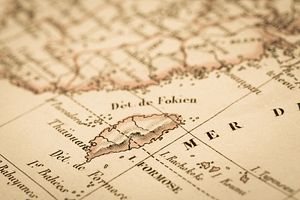The United States government has, for the first time, declassified in full documents that shed insight into Taiwan’s work on nuclear technology with possible weapons applications in the late 1970s. Throughout the 1970s, the United States was determined to prevent unilateral Taiwanese efforts to acquire advanced nuclear technology, which could potentially lead to a Taiwanese nuclear weapon.
The United States’ position was primarily based around concerns that Taiwan’s pursuit of a nuclear weapon would sharply spike tensions in the Taiwan Strait. For Taipei, China’s acquisition of a nuclear weapon in the 1960s significantly increased its interest in acquiring the capability itself. As Denny Roy has cataloged, Taiwan’s nuclear weapons program kicked off in the late-1960s and involved several attempts to acquire foreign nuclear technology and develop its own enrichment technology.
The newly declassified documents reveal details on the diplomatic engagement between the administration of U.S. President Jimmy Carter and the Taiwanese government over the nuclear issue. In September 1976, a few months before Carter entered office, Taiwan and the United States came to an agreement that sought to shut down Taipei’s nuclear program for good. Chiang Ching-kuo, the Taiwanese president at the time, pledged that Taiwan would not develop facilities to reprocess spent fuel. This came after the International Atomic Energy Agency (IAEA) had discovered Taiwanese attempts to produce weapons-grade plutonium and enrich uranium.
The documents, specifically two declassified cables, shed insight on the Carter administration’s attempts to monitor Taiwanese compliance with the 1976 pledge. (See the first here and second here, courtesy of the National Security Archive at the George Washington University.) In 1977, IAEA inspectors detected attempts by Taiwan to use spent fuel from the Taiwan Research Reactor outside the facility, in violation of safeguards. The Carter administration worked with the Taiwanese government to develop terms to restart the reactor, which had been suspended after the IAEA’s findings.
The second cable highlights later Taiwanese work on uranium enrichment technology. In 1978, a group of U.S. government nuclear experts traveled to Taiwan and discovered that a scientist at a national research institute there had been working on laser uranium enrichment technology that had clear weapons applications. The Carter administration ultimately warned Chiang’s government that continued suspicions that Taiwan was looking into retaining a latent nuclear weapons breakout capability would mean that Washington could no longer “continue supporting nuclear export licenses for [Taiwan’s] power program.”
In an aside, the newly declassified documents also provide the first official confirmation from the U.S. government that it stored its own nuclear weapons on the Japanese island of Okinawa during the Cold War. This revelation is less interesting, since the presence of nuclear weapons on Okinawa was basically an open secret. (There were even pictures of U.S. airmen handling a nuclear bomb on the island.) In any case, that cable is available here.

































